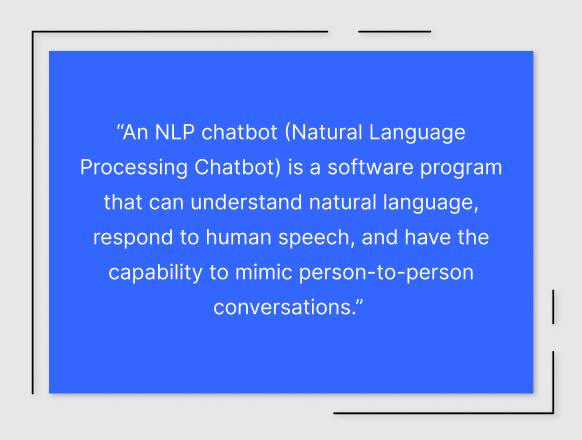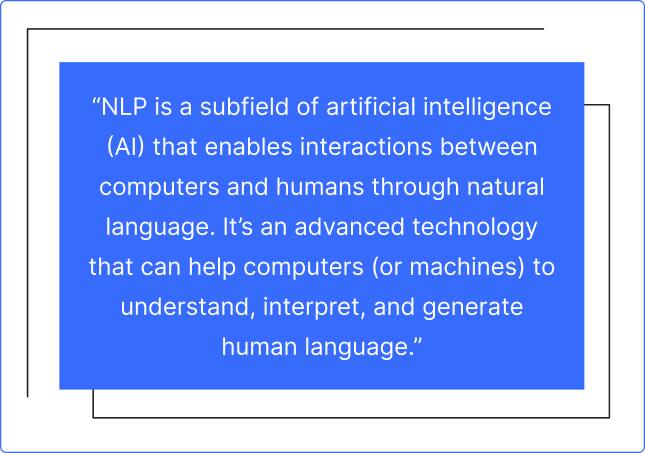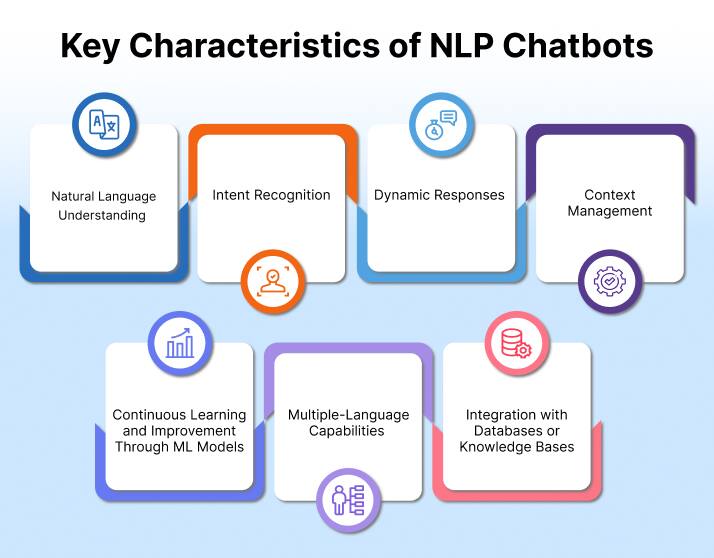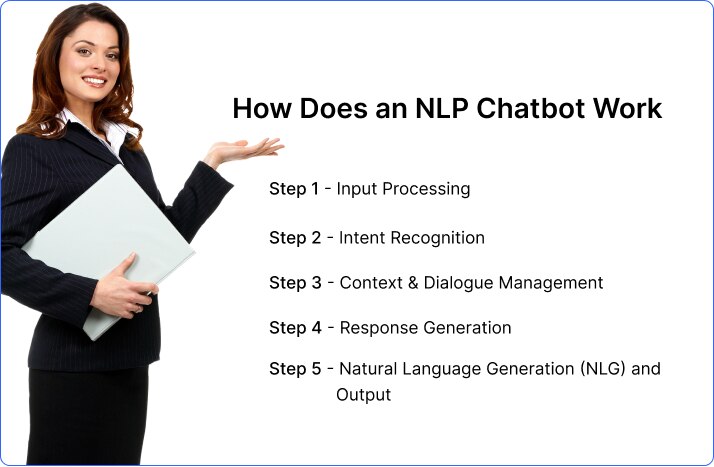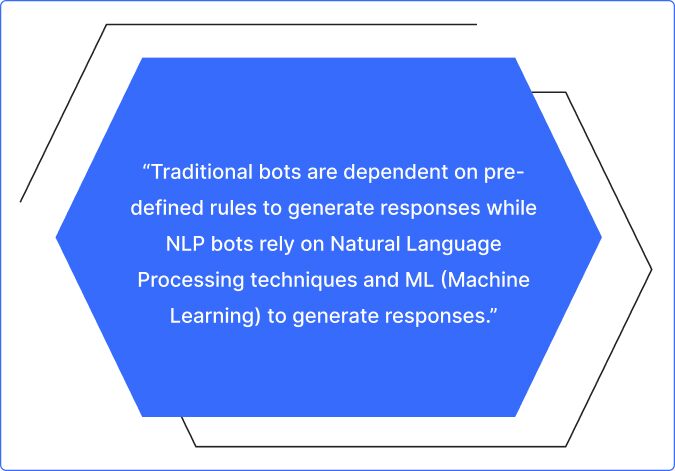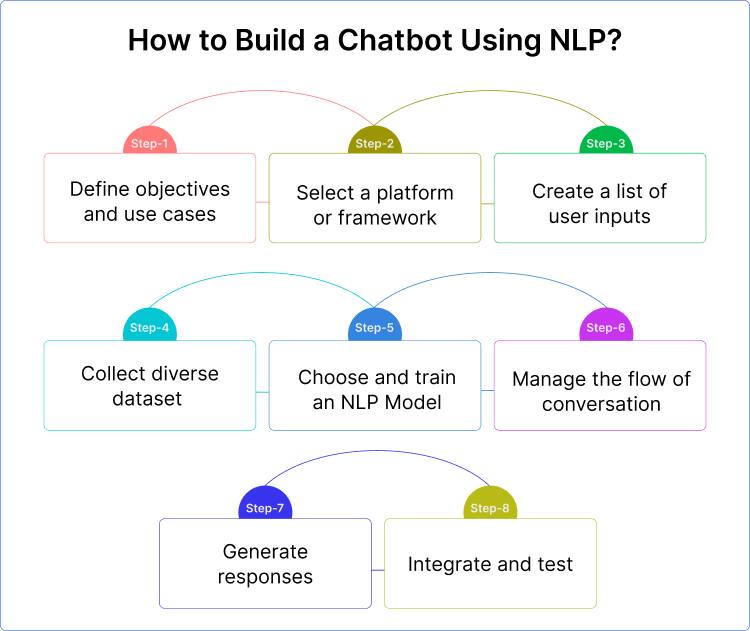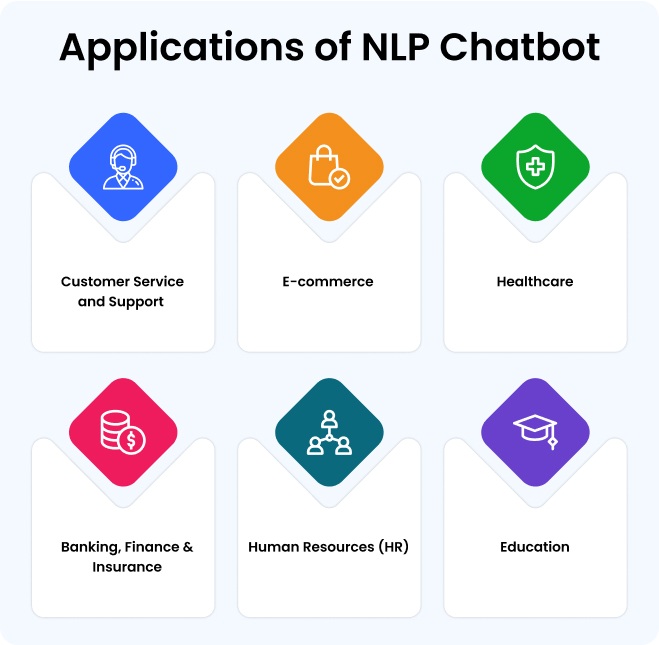Conversing with chatbots is not always a pleasing experience. If they are not intelligent and smart, you might have to endure frustrating and unnatural conversations. On top of that, basic bots often give nonsensical and irrelevant responses and this can cause bad experiences for customers when they visit a website or an e-commerce store.
This kind of problem happens when chatbots can’t understand the natural language of humans. Surprisingly, not long ago, most bots could neither decode the context of conversations nor the intent of the user’s input, resulting in poor interactions.
Enter NLP chatbot and the scenario is completely different now!
These bots are not only helpful and relevant but also conversational and engaging. NLP bots ensure a more human experience when customers visit your website or store.
So, you must wonder, how can a chatbot be that advanced? Well, it has to do with the use of NLP – a truly revolutionary technology that has changed the landscape of chatbots.
In this blog, we will explore the NLP chatbot, discuss its use cases, and benefits; understand how this chatbot is different from traditional ones, and also learn the steps to build one for your business.
But first, let’s get started with understanding what an NLP chatbot is…
What is an NLP Chatbot?
An NLP chatbot ( or a Natural Language Processing Chatbot) is a software program that can understand natural language and respond to human speech. This kind of chatbot can empower people to communicate with computers in a human-like and natural language.
NLP chatbots are advanced with the capability to mimic person-to-person conversations. They employ natural language understanding in combination with generation techniques to converse in a way that feels like humans.
Unlike conventional rule-based bots that are dependent on pre-built responses, NLP chatbots are conversational and can respond by understanding the context. Due to the ability to offer intuitive interaction experiences, such bots are mostly used for customer support tasks across industries.
Understanding How NLP Works in Chatbots
NLP or Natural Language Processing is a subfield of artificial intelligence (AI) that enables interactions between computers and humans through natural language. It’s an advanced technology that can help computers ( or machines) to understand, interpret, and generate human language.
The use of NLP is growing in creating bots that deal in human language and are required to produce meaningful and context-driven conversions. NLP-based applications can converse like humans and handle complex tasks with great accuracy.
This has led to their uses across domains including chatbots, virtual assistants, language translation, and more.
Key features of NLP include –
- Using NLP, texts can be broken down into individual words and assigned grammatical categories.
- It can identify and classify entities in a text, and can also determine the sentiments expressed in texts.
- NLP-powered programs can understand the contexts of texts and can also translate texts from one language to another automatically.
- Any tool or system using NLP can convert spoken words into texts and answer questions asked in natural language.
Importance of NLP for Chatbots
Natural Language Processing (NLP) has a big role in the effectiveness of chatbots. It helps in creating intelligent and conversational interfaces. Without the use of natural language processing, bots would not be half as effective as they are today.
Let’s look at the importance of NLP for chatbots –
- NLP-powered chatbots can understand and respond to user queries in natural language.
- Such bots ensure more intuitive interactions.
- Chatbots using NLP can understand the context of a conversation.
- Simple bots can’t recognize the intent behind user messages, but NLP ones do.
- NLP empowers chatbots to handle a variety of user inputs and variations in language.
What is NLP Conversational AI?
NLP conversational AI refers to the integration of NLP technologies into conversational AI systems. The integration combines two powerful technologies – artificial intelligence and machine learning – to make machines more powerful. So, devices or machines that use NLP conversational AI can understand, interpret, and generate natural responses during conversations.
Let’s look at some key aspects of an NLP conversational AI –
- Compared to an NLP chatbot, a conversational AI can handle more complex and dynamic interactions.
- A conversational AI system has a broader range of utility and scenarios compared to chatbots.
- It’s used in virtual assistants and has applications in more complex dialogue-based conversations.
Key Characteristics of NLP Chatbots
NLP chatbots have redefined the landscape of customer conversations due to their ability to comprehend natural language. They are advanced and can enable human-like interactions.
Here are the key characteristics of natural language processing chatbots –
- Natural Language Understanding
- Intent Recognition
- Dynamic Responses
- Context Management
- Continuous Learning and Improvement Through ML Models
- Multiple-Language Capabilities
- Integration with Databases or Knowledge Bases
How Does an NLP Chatbot Work?
An NLP chatbot works by relying on computational linguistics, machine learning, and deep learning models. These three technologies are why bots can process human language effectively and generate responses.
Here are the steps involved in the way an NLP chatbot works –
Step 1 – Input Processing
The chatbot will break the user’s inputs into separate words where each word is assigned a relevant grammatical category. After that, the bot will identify and name the entities in the texts.
Step 2 – Intent Recognition
The input processed by the chatbot will help it establish the user’s intent. In this step, the bot will understand the action the user wants it to perform.
Step 3 – Context & Dialogue Management
The chatbot will keep track of the user’s conversations to understand the references and respond relevantly to the context. In addition, the bot also does dialogue management where it analyzes the intent and context before responding to the user’s input.
Step 4 – Response Generation
Now when the bot has the user’s input, intent, and context, it can generate responses in a dynamic manner specific to the details and demands of the query.
Step 5 – Natural Language Generation (NLG) and Output
The bot will form grammatically correct and context-driven sentences. This is done to convert the bot’s response into natural language. In the end, the final response is offered to the user through the chat interface.
Traditional Chatbots Vs NLP Chatbots
Traditional chatbots and NLP chatbots are two different approaches to building conversational interfaces. The choice between the two depends on the specific needs of the business and use cases. While traditional bots are suitable for simple interactions, NLP ones are more suited for complex conversations.
Let’s look at some of the key differences between traditional and NLP bots –
- Traditional bots depend on pre-defined rules to generate responses while NLP bots rely on Natural Language Processing techniques and ML (Machine Learning) to generate responses.
- Conventional bots can’t handle variations and context whereas NLP-powered bots can understand context and enable human-like interactions.
- Bots that use pre-built responses struggle to maintain context across conversations but NLP chatbots can remember previous interactions and ensure natural conversations.
- Traditional bots are static and need manual feeding of new scenarios and updates whereas natural language processing chatbots can learn and evolve through machine learning.
- Scalability is limited with conventional bots in handling diverse conversational scenarios but NLP chatbots provide better scalability for diverse conversational scenarios.
- User experience feels less natural with traditional chatbots whereas it feels more natural and engaging with NLP bots.
How to Build a Chatbot Using NLP?
There are several steps involved in building a chatbot using NLP. When you build a self-learning chatbot, you need to be ready to make continuous improvements and adaptations to user needs.
Let’s look at the steps involved in building a self-learning chatbot –
Step 1 – Define objectives and use cases
When you set out to build a chatbot, the first step is to outline the purpose and goals you want to achieve through the bot. It’s equally important to identify chatbot use cases. The types of user interactions you want the bot to handle should also be defined in advance.
Step 2 – Select a platform or framework
In the next step, you need to select a platform or framework supporting natural language processing for bot building. This step will enable you all the tools for developing self-learning bots.
Step 3 – Create a list of user inputs
User intent and entities are key parts of building an intelligent chatbot. So, you need to define the intents and entities your chatbot can recognize. The key is to prepare a diverse set of user inputs and match them to the pre-defined intents and entities.
Step 4 – Collect diverse dataset
When building a bot, you already know the use cases and that’s why the focus should be on collecting datasets of conversations matching those bot applications. After that, you need to annotate the dataset with intent and entities.
Step 5. Choose and train an NLP Model
There are two NLP model architectures available for you to choose from – BERT and GPT. The first one is a pre-trained model while the second one is ideal for generating human-like text responses. Now you need to merge the model with your annotated dataset.
Step 6 – Manage the flow of conversation
Before managing the dialogue flow, you need to work on intent recognition and entity extraction. This step is key to understanding the user’s query or identifying specific information within user input. Next, you need to create a proper dialogue flow to handle the strands of conversation.
Step 7 – Generate responses
Now when you have identified intent labels and entities, the next important step is to generate responses. In the response generation stage, you can use a combination of static and dynamic response mechanisms where common queries should get pre-build answers while complex interactions get dynamic responses.
Step 8. Integrate and test
Now when the chatbot is ready to generate a response, you should consider integrating it with external systems. Once integrated, you can test the bot to evaluate its performance and identify issues.
Applications of NLP Chatbot
NLP chatbots are advanced with the ability to understand and respond to human language. They can generate relevant responses and mimic natural conversations. All this makes them a very useful tool with diverse applications across industries.
Here are some of the applications of an NLP chatbot –
1. Customer Service and Support
Many companies use intelligent chatbots for customer service and support tasks. With an NLP chatbot, a business can handle customer inquiries, offer responses 24×7, and boost engagement levels. From providing product information to troubleshooting issues, a powerful chatbot can do all the tasks and add great value to customer service and support of any business.
2. E-commerce
Online stores deploy NLP chatbots to help shoppers in many different ways. These bots can assist in finding products and tracking orders. A user can ask queries related to a product or other issues in a store and get quick replies. E-commerce bots can remove all the hassles for shoppers.
3. Healthcare
Healthcare chatbots have become a handy tool for medical professionals to share information with patients and improve the level of care. They are used to offer guidance and suggestions to patients about medications, provide information about symptoms, schedule appointments, offer medical advice, etc.
4. Banking, Finance & Insurance
Most top banks and insurance providers have already integrated chatbots into their systems and applications to help users with various activities. These bots for financial services can assist in checking account balances, getting information on financial products, assessing suitability for banking products, and ensuring round-the-clock help.
5. Human Resources (HR)
A growing number of organizations now use chatbots to effectively communicate with their internal and external stakeholders. These bots have widespread uses, right from sharing information on policies to answering employees’ everyday queries. HR bots are also used a lot in assisting with the recruitment process.
6. Education
Chatbots have truly revolutionized the landscape of education. Today, education bots are extensively used to impart tutoring and assist students with various types of queries. Many educational institutes have already been using bots to assist students with homework and share learning materials with them. All this makes learning more fun and interactive.
Build Powerful NLP Chatbots and Grow Your Business with the REVE Platform
Chatbots are integral to the success of any enterprise. They can assist with various tasks across marketing, sales, and support.
At REVE, we understand the great value smart and intelligent bots can add to your business. That’s why we help you create your bot from scratch and that too, without writing a line of code.
You can use our platform and its tools and build a powerful AI-powered chatbot in easy steps. The bot you build can automate tasks, answer user queries, and boost the rate of engagement for your business.
You can also add the bot with the live chat interface and elevate the levels of customer experience for users. You can provide hybrid support where a bot takes care of routine queries while human personnel handle more complex tasks.
In addition, we have other helpful tools for engaging customers better. You can use our video chat software, co-browsing software, and ticketing system to handle customers efficiently.
Final Thoughts
Traditional chatbots have some limitations and they are not fit for complex business tasks and operations across sales, support, and marketing. This has driven the demand for intelligent chatbots powered by NLP.
With REVE, you can build your own NLP chatbot and make your operations efficient and effective.
You can sign up and check our range of tools for customer engagement and support.

